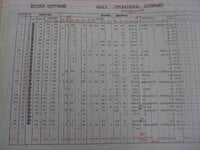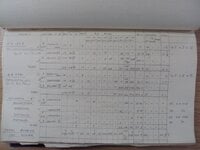MiTasol
Captain
384th Bomb Group shows, for the aircraft I have looked at, 10 x 500lb GP for 17 August.
View attachment 794422
The maximum bomb load for a Mosquito in the period (August-October 1943) was 2,000lb (B.IV) or 3,000lb (B.IX, if any were around).
Schweinfurt should be well within range of a B.IV Mosquito with 2,000lb bomb load.
Thanks. I did not realise the early Mosquitos did not have the later bomb load capacity. My memory is that the B-17 and B-24 bomb loads dropped on the later models as the empty weight grew from turrets and waist guns, Tokyo tanks, etc.
From the same chart for the B-17 it seems its heaviest internal load was 6 1600 lb bombs or 9600 lb but it may have been able to carry a couple of lighter bombs above the larger bombs. As someone already said tho, the 1600 lb bomb was rarely used.
Last edited:


